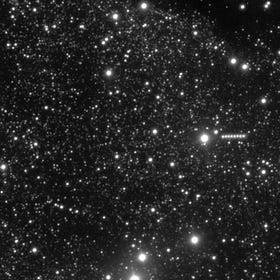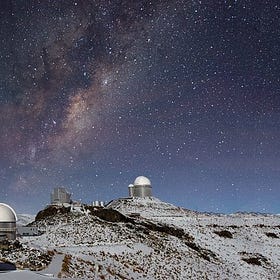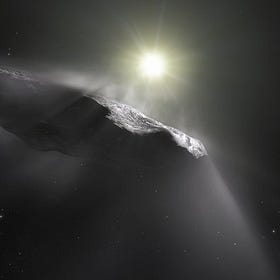The Week in Space and Physics: Exoplanets, Comets, and Black Holes
On habitable exoplanets, the prospects for exploring an interstellar comet, the earliest black hole, and a strange supernova.
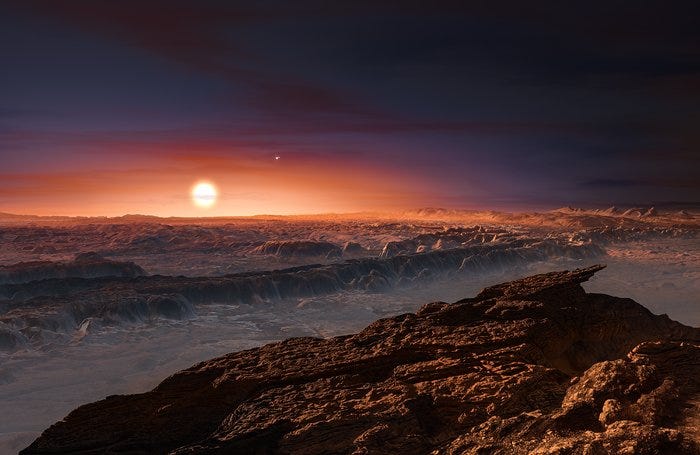
Alpha Centauri, it turns out, might have a gas giant.
Two weeks ago astronomers presented images of this planet, which, they say, is probably about the size of Saturn. Yet nothing is certain. The images are faint and hazy, and although suspicions that this planet exists have been around for a while, previous efforts to view it – including those with the James Webb Space Telescope – had failed to spot it.
Still, if it exists, the planet promises to be a tempting prospect for would-be interstellar explorers. Around it might revolve moons, and these moons would be of the right temperature for liquid water to flow and for life to thrive. Even if there is none already there, future explorers may find them a comfortable place to leave humanity’s first footprints beyond the solar system.

But if it doesn’t exist, then future explorers might prefer to turn their gaze towards TRAPPIST-1, a faint red star about forty light years away. Around it orbit seven rocky planets, several of which also lie in the right temperature range for water and, therefore, life as we know it. These worlds, unlike the gas giant of Alpha Centauri, are also confirmed to actually exist.
Unfortunately, we have little idea if any are habitable. Observations of the innermost two worlds – named 1b and 1c – have shown them to be barren airless places, planets more akin to Mercury or Mars than to Earth. A new study of the third planet out - 1d – has reached a similarly depressing conclusion for that world too.
The work, which was done with the James Webb Space Telescope, found no sign of any atmosphere around it at all. It is probably as airless as Mercury, then, although there is some possibility it has a thick, toxic atmosphere like Venus, in which case the clouds then shrouding it may be shielding it from proper view by our telescopes.
Either way, it is probably not a pleasant place to visit. Fortunately the TRAPPIST system has four more worlds so far unstudied. Astronomers think there are good chances that at least one of them has an atmosphere, and that it could therefore be home to some kind of life. But we’ll have to wait for that – the James Webb, sadly, hasn’t finished studying them just yet.
Could Juno Study an Interstellar Comet?
For the past nine years, the Juno spacecraft has been circling Jupiter. In that time it has studied the clouds and storms raging across the giant planet, imaged its aurora, seen lightning flashing around its poles, and even spotted a meteor plunging into its depths.
In theory, Juno could keep sending back data for several years to come. But there are two reasons why that might not happen. The first is a long-standing concern about contaminating the moons of Jupiter. Many of these are interesting places, and some – notably Europa – might be home to primitive lifeforms. If Juno were to be abandoned and one day crash into one of these moons, there is a risk of disturbing these pristine places.
This can be avoided by deliberately crashing Juno into Jupiter before it fails due to radiation damage or simply runs out of fuel, as was done with the Galileo probe in 2003. Yet there is now a second, political risk. The Trump administration seems determined to cancel many of NASA’s scientific missions, and Juno is one of those targeted for cuts. Though the probe is cheap to run and likely has enough fuel to operate for several more years, NASA might end up terminating the mission later this year anyway.
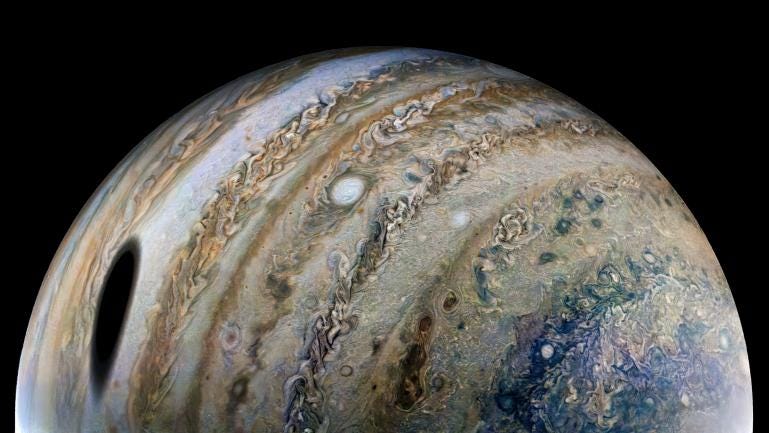
Enter, however, a surprise interstellar comet. Astronomers spotted one - 3I/Atlas – moving through the solar system a few weeks ago. It is, obviously, a tempting target. The comet seems to be several billion years old and probably came from a far distant part of the galaxy. Yet we have no probe ready to examine it, and by late next year it will be speeding outwards once more towards the stars.
Avi Loeb, professor at Harvard University, reckons Juno could save the day. According to his calculations, the spacecraft could be redirected away from Jupiter and then fly past 3I/Atlas. That would not offer a rare chance to get a close-up view of an interstellar object, but also breathe new life into a probe facing an imminent demise.
Others are more sceptical – Juno is indeed old, they say, and might not make it to the comet. Perhaps it is better, then, to leave it at Jupiter and redirect another probe. One option is JUICE, a European probe currently heading out to Jupiter that could make a slight detour. Another is Mars Odyssey, a twenty-year-old spacecraft orbiting Mars that is, like Juno, both old and facing imminent termination by the Trump administration.
Even if the technical matters can be worked out, however, the political issues remain. Trump’s government has little interest in science, and even Osiris-APEX, a mission that is reusing an old spacecraft to visit Apophis, an asteroid that will pass frighteningly close to Earth in 2029, is probably going to be cancelled. Unless Europe or China steps up, the chances of taking a closer look at 3I/Atlas are sadly low this time around.
The Oldest Known Black Hole
Look up at the night sky, people sometimes say, and you are peering into the past. There is some truth to this: light from distant stars takes time to reach us, and so the further away something is, the older the light we see from it becomes.
So it is then, that our most powerful telescopes are capable of finding some of the earliest objects known to humans. Among them is Earendel, a star seen as it appeared less than a billion years after the Big Bang, and MoM-z14, a galaxy that formed when the cosmos was less than three hundred million years old.
Now, they have been joined by the earliest known black hole. Naturally, of course, no photons come from this dark object. But when astronomers used the James Webb telescope to study a distant and mysterious red object known as CAPERS-LRD-z9, they found it to contain clouds of hydrogen moving at high speed around some dense central object.

Calculations showed this must be a black hole, and that it must have a mass almost forty million times that of the Sun. The study also confirmed its age: the photons we see were emitted half a billion years after the Big Bang. That makes it the earliest black hole ever proven to exist.
Yet the real question, the astronomers noted, was how the black hole had got so big so quickly. Black holes are supposed to have a limit on how fast they can consume mass. But when they ran the numbers, they found this black hole must have either broken this limit, or somehow been born with an enormous size. Either way, this ancient and distant black hole looks certain to challenge our ideas about the early universe.
A Bad Case of Stellar Indigestion
What happens if a black hole falls into a star?
Back in July 2023, we might have seen exactly this scenario play out. Telescopes back then saw a star exploding in a distant galaxy, an incident that was tracked as a supernova. But when astronomers studied the event in more detail, they found it to show an unusual pattern of fluctuations in its brightness.
This, they think, can be explained if the star was locked in orbit with a black hole. Naturally, this arrangement placed a lot of stress upon the star, making it brighten and dim as powerful tides swept across it. But at some point, the black hole ventured too close, and may even have partially entered the star.
At that moment, they say, the star either exploded or was ripped apart by the black hole. Whichever it was, the unfortunate star was destroyed, creating the flash of light we saw in 2023. Nothing good, it seems, can come from a close encounter with a black hole.
Read More
The Mysterious Origins of the Third Interstellar Comet
Three weeks ago, a robotic telescope in Chile spotted a comet moving …
What Dark Energy Means For The End of Time
Long ago, long before humankind had dreamed of science, of forces and atoms, of dark matters and dark energies filling the void, our deep ancestors looked up at the splendor of the night and wondered. How, some child must have asked, did it all begin? And then, after some thought: how will it all end?
What Was 'Oumuamua? A Piece of Alien Space Trash? A Dark Comet? Or An Interstellar Iceberg?
At first we thought it was a comet. That made sense. Comets often come from …

